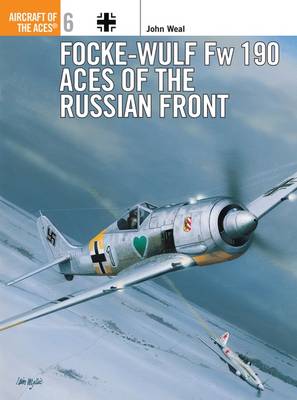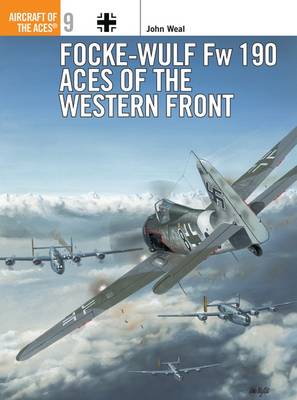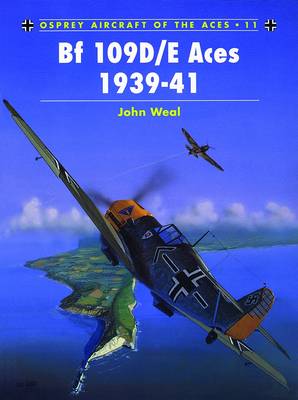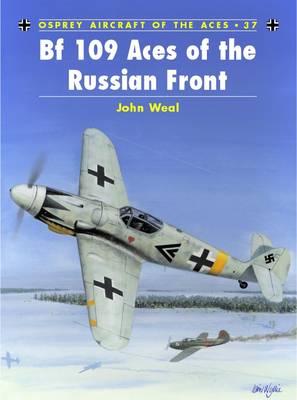Osprey Aircraft of the Aces S.
6 primary works
Book 6
Of all the fronts fought on by the Jagdflieger during World War 2, the Russian, or Eastern, was easily the most lucrative in terms of targets for the experten. Marry an abundance of targets with the Luftwaffe's best piston-engined fighter of the war - Focke-Wulf's Fw 190 'Butcher Bird' - and it quickly becomes apparent why so many Jagdflieger achieved kills that passed the 100 victories mark. Flying in variable weather on a battlefront that was constantly changing, the Fw 190 pilots fought virtually to extinction in both the pure fighter and the crucial Schlacht ground attack roles. Aircraft of the Aces 6 and 37 are also available in a single volume as 'German Aces of the Russian Front'.
Book 9
The Fw 190 was the scourge of Fighter Command from the moment it appeared on the Western Front at Abbeville in August 1941 with II./JG 26. A nimble, speedy and well-armed adversary, the 'Butcher Bird' quickly proved superior to all Allied fighters of the time, particularly at medium to low altitude. Led by Experten of the calibre of 'Pips' Priller, Heinz Bar and Walter Oesau, the handful of Fw 190-equipped Jagdgeschwader flew against overwhelming odds, firstly on the Channel coast, and then in direct defence of the Reich when the Jagdflieger took on the might of the USAAF's Eighth and Ninth Air Forces. This is their story.
Book 11
The period covered in this volume was considered to be the 'glory years' for the Jagdwaffe - fresh from the experience gained in the Spanish Civil War - and for the Bf 109 in particular. Many famous pilots scored their first kills in the classic dogfights staged over Poland, Western Europe, the Channel and finally southern England. Some 40 Knight's Crosses were awarded in 1940 alone. However, after sweeping all before them in support of the Blitzkrieg across continental Europe, the Bf 109E pilots were to suffer badly during the Battle of Britain, the result of poor tactics inflicted upon them by the Luftwaffe High Command, and their mount's less then generous range.
Book 25
This volume is the first of its type to be devoted exclusively to the Zerst rer day fighter aces, spanning the war years from Poland to the defence of the Reich. Although Messerschmitt's single-engined Bf 109 has received most of the plaudits for achieving virtual air superiority over Europe in 1939-40, the exploits of the manufacturer's twin-engined Bf 110, the Ju 88 and the Me 410 Zerst rer in the first year of the war also make for very impressive reading. Indeed, on the eve of World War 2 a posting to a Bf 110 unit was considered to be the best career move available in the Luftwaffe.
Book 29
The follow--on volume to Osprey Aircraft of the Aces 11 Bf 109D/E Aces 1939-41, this book charts the story of the myriad aces who flew the later marks of Messerschmitt fighter through to VE-Day. As good as the Emil had been during the opening 18 months of the war, the aircraft was being progressively bettered in virtually all aspects of aerial combat by the Spitfire come 1941, so Messerschmitt updated and improved the breed, firstly with the introduction of the Friedrich and then the multi-variant Gustav.
Book 37
The highest scoring aces of any aerial conflict were the Luftwaffe pilots involved in the bloody combats on the Russian Front. The most common fighter used by these pilots was the Bf 109, which was involved in the action from Operation Barbarossa in June 1941, through to the doomed Defence of the Reich in 1945. Units like JGs 5, 52 and 54 all flew the Messerschmitt fighter, progressing from Emil to Gustav variants. This volume includes all the high-scoring aces, and explains just how difficult a job the Jagdwaffe faced on the Russian Front, and how its experts achieved such overwhelming scores.





